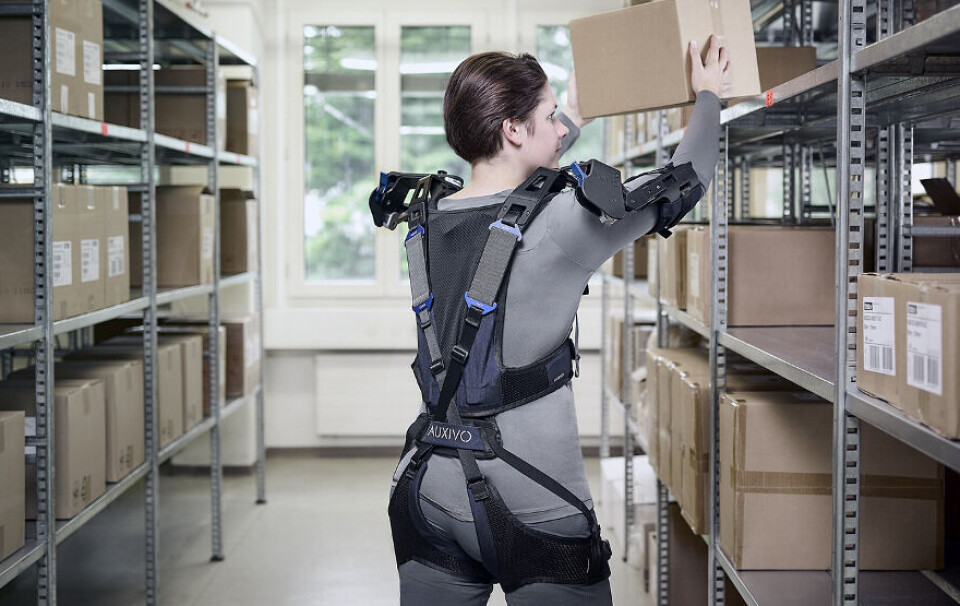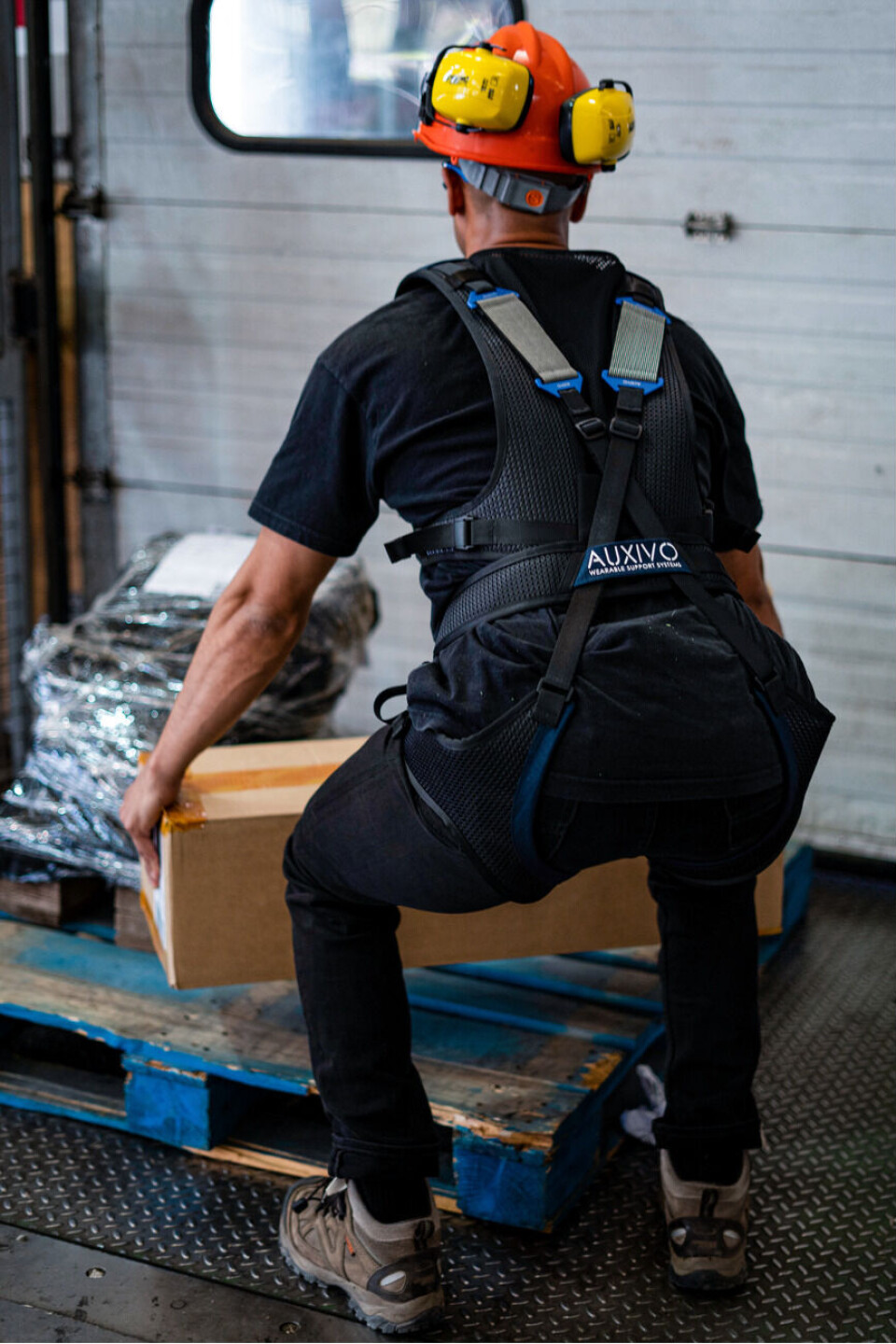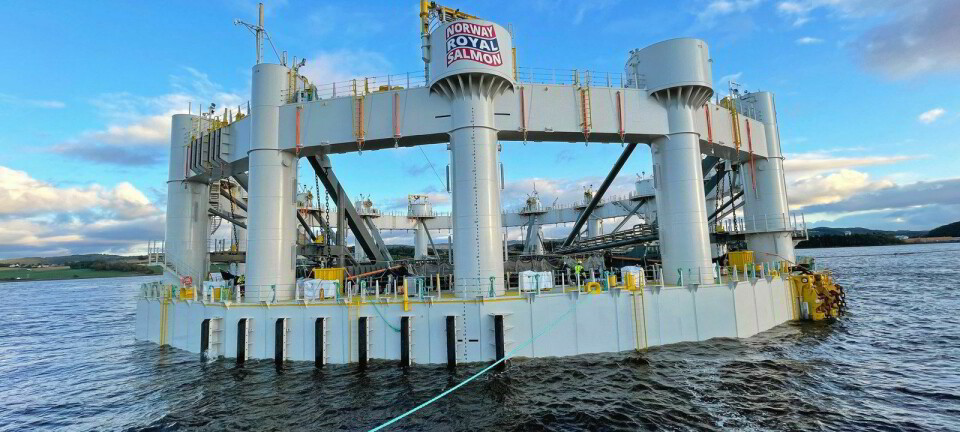
Is this the next PPE essential for salmon farming?
Hard hats, life jackets, and waterproofs are daily wear for many working in aquaculture. But in Chile, a company is promoting something extra: an exoskeleton for those who perform physical tasks.
Andes Levers Chile supplies exoskeletons, wearable supports designed to increase safety and reduce strain for those doing physical work.
Under the leadership of Renato Sepúlveda, the company has for five years been dedicated to integrating its solutions into labour-intensive industries, and sees salmon farming as a sector where its products can be of benefit.
“These devices improve people’s occupational health and safety, reduce occupational hazards, and reduce the muscular effort workers exert,” Sepúlveda told Fish Farming Expert’s Chilean sister site, Salmonexpert.cl.

He said the most common problem companies face is musculoskeletal disorders, a condition that, according to European Union figures, affects 38% of workers in the EU. It is even more prevalent in Chile due to less automated processes, he added.
According to EU statistics, the cost of musculoskeletal disorders is the equivalent of 2% of its countries’ annual GDP due to sick leave, lost productivity, absenteeism, and presenteeism (when an employee is physically present but unable to be fully productive).
“We estimate that in Chile it could be 3%. This is a costly problem not only for companies that see their competitiveness diminished, but also for healthcare systems and, ultimately, for families who must deal with chronic illnesses,” Sepúlveda said.
In activities such as moving boxes of salmon, each weighing approximately 25 kilos, a worker can lift this weight about 100 times in a shift. Over two days, that’s the equivalent of the weight of an elephant
Focusing on salmon farming world, Sepúlveda described the magnitude of the challenge. “In activities such as moving trays or boxes of salmon, each weighing approximately 25 kilos, a worker can lift this weight about 100 times in a shift, which is equivalent to moving 2,500 kilos (2.5 tonnes). Over two days, that’s the equivalent of the weight of an elephant,” he said.
“The human body is not made for this, so it becomes essential to support it with technology that distributes the load and reduces physical deterioration over the years.”

Beyond safety, productivity appears to be another determining factor. “We have measured a 12-13% improvement in productivity,” stated Sepúlveda, who added that this effect is especially noticeable in adverse work environments such as low temperatures, long night shifts, or humid and extreme environments. In the case of salmon farming, where a large part of operations is carried out in complex climatic conditions and with constant handling of loads, the benefits of exoskeletons become particularly attractive.
Increased inclusion
Likewise, the incorporation of this equipment opens the door to the inclusion of women and older adults in jobs that have historically been perceived as too physically demanding.
“These devices help women, older adults, or those who have undergone surgery or have some weakness, because they allow them to perform work that involves repetitive movements of loads,” Sepúlveda said.
Modern exoskeletons have evolved toward greater comfort and simplicity, he said. “What they do is gather energy when you bend down, and when you stand up, they provide energy just when you need it most. This orchestration is what has taken so long to perfect, but today the devices are comfortable and almost imperceptible under work clothes.”
Change management
However, successful implementation doesn't depend solely on technology. Change management is key. “A big part of what we do is change management. Teaching people why it should be used, training them, and supporting them through all stages," he explained.
The company works with diagnostics, pilot programmes, and mass deployments until the use of equipment is integrated as internal protocols, similar to mandatory personal protective equipment. In Chile, Andes Levers already collaborates with more than 60 companies and is seeking to expand in Latin America with experiences in Argentina and Peru.
Finally, Sepúlveda is adamant that leadership in this transformation must come from the companies themselves. “Companies must take action, and it must not be workers or unions who demand implementation. Solutions exist today, and it is up to employers to take the step. In an industry like salmon farming, which is labour-intensive and highly exposed to physical risks, exoskeletons are presented not only as a technological innovation, but also as a strategic investment in safety, productivity, and inclusion,” he concluded.























































